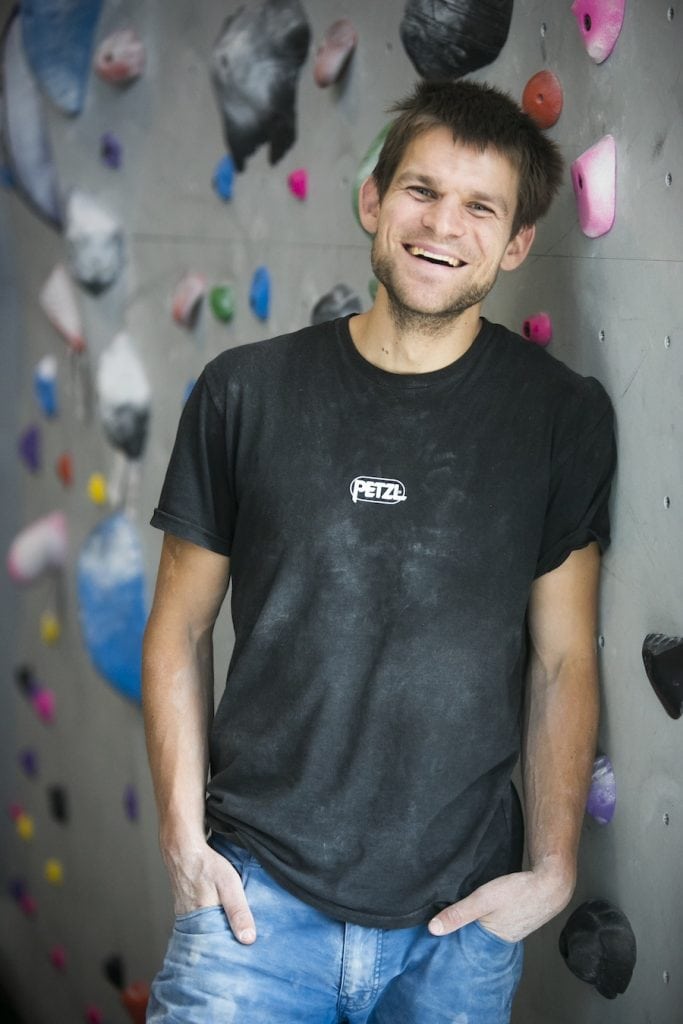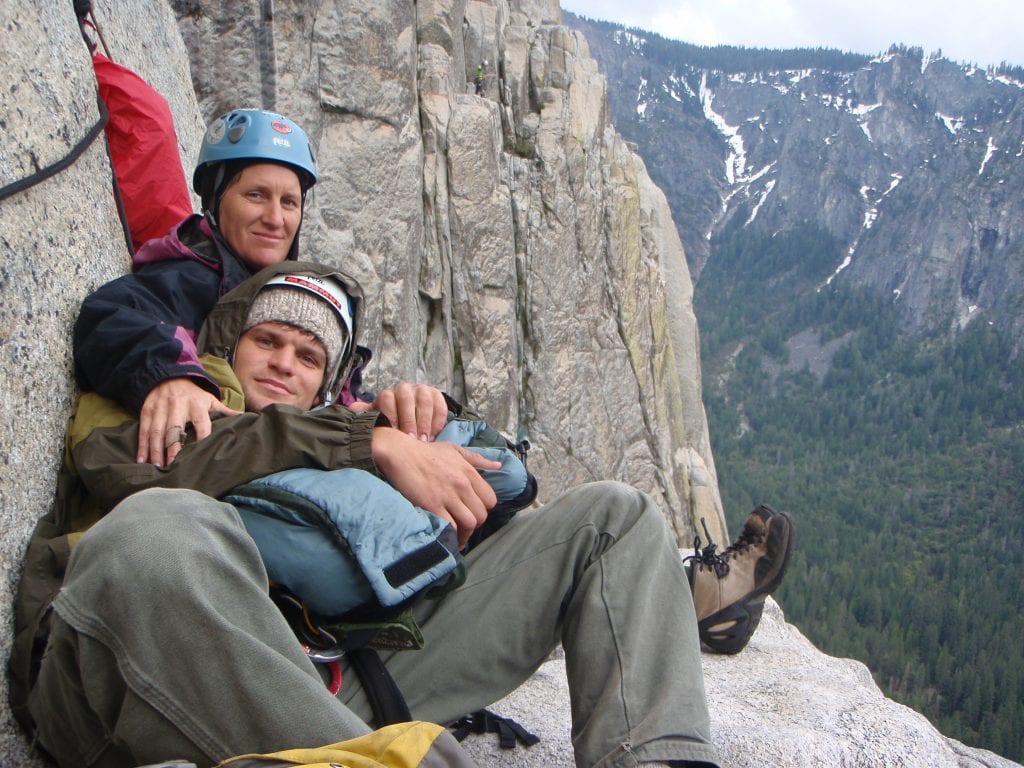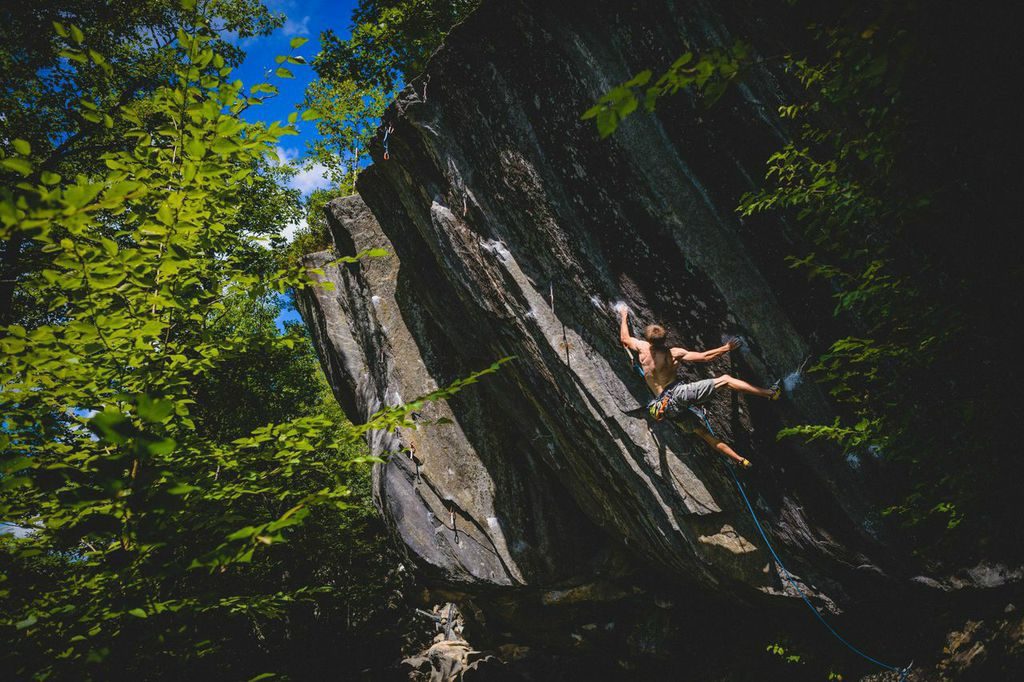Salt Pump's Largest Community Event & Competition!
Saturday, March 8th
- 3 Climbing Sessions
- Mega raffle! (every send earns you a ticket!)
- Vendor Village
- Spectator friendly Finals Round
Salt Pump's Largest Community Event & Competition!
Saturday, March 8th

Meet Salt Pump’s climbing coach Matty Zane. Photo by Vince Schaefer.
Matty Zane grew up in the small town of Freedom, Maine. Both his parents worked at the nearby college in Unity, and growing up, Matty and his older brother Cody lived for soccer. Then, at the tender age of 14, Matty’s adventurous mother Nancy took him climbing for the first time on the granite crags in Clifton. “I instantly fell in love with the sport”, Matty recalls.
Ten years later, that spark has turned to wildfire. On June 6th, 2015, Matty tied into a rope and climbed the hardest route of his life: a radically overhanging wave of schist in Rumney, New Hampshire named China Beach (5.14b). The send kicked off an eleven month road trip from Maine to Colorado, California, Colorado (again), Kentucky, Nevada, and California (again). Along the way, Matty sent hard sport routes like Horse Latitudes (5.14a) in the Virgin River Gorge, Utah, and hard trad routes like Pyromania (5.13a) and Solar Flare (5.12d) in the California Sierras. He freed climbed one big wall, a route called Crystal Dawn on the serious Buffalo Wall (5.13c) in Red Rocks, Nevada, and came within a move or two of freeing another: Golden Gate (5.13b) on El Capitan. And in between each of these major ascents, Matty was climbing dozens — dozens — of 5.12s and 5.13s.
“Physically, my strength declines a little on the road,” Matty says, with typical understatement. “But because of all the mileage, my body is just more synched.”
How did a young guy not yet twenty-five years old manage to cultivate the skills and judgement that such diverse climbing exploits require? The answer has more to do with brain than brawn. During high-school, Matty attended classes at Unity College for credit, enabling him to finish his undergraduate degree before he turned twenty. After graduating, Matty took the time to learn old school outdoors skills working on trail crew for the AMC and RMC in the White Mountains of New Hampshire, before eventually migrating down to Boston to work coaching climbing for Rockspot Climbing.
“I find that it’s an awesome way to share my psyche of the sport with other people,” Matty says of coaching. “I get just as much reward from seeing one of my athletes excel as I do my own sends.” Eventually, after regularly coaching climbers to national level competitions, the pull of the road got to be too much, and Matty decided to pack up his van and seek new adventures out West.
“Climbing is so much more than just about sending routes,” Zane says. “It’s an entire lifestyle. The people, the areas, the stories, the food, the list goes on…”
A year after he sent China Beach and left New England for the open road, Matty is excited to have returned to Maine this summer to pursue a degree in physical therapy and join the Salt Pump community.
What was your first real climbing adventure?
When I was 14, I climbed Moby Grape on Cannon with my mom. I probably felt just as psyched after that day of climbing than any other day I’ve had. I had only been climbing for a few months, and was able to lead all the pitches… Those were the glory days! I was more or less self-taught and definitely had a lot of “hiccups” along the way, but all for the best.
My mom was my first climbing partner and has always had the most influence on me, it’s cool to be able to share climbing with her. We’ve had a lot of adventures together, including our own adventure on El Cap! She’s still the first person I’ll call after I send any of my projects.
Was there a point when you decided to get serious about pursuing hard rock climbing?
I was always on the attack to climb harder, it just took a long time and A LOT of effort. I’m still pretty average. I probably climbed 5.8-5.9 for two full years. I remember thinking that if I could ever climb 5.10 my life would be complete. Funny how our expectations change.
What’s the longest you’ve spent working one single project — either sport climbing or bouldering?
China Beach in Rumney. I hold the title for the weakest person to ever send it. I managed to epic in every way possible. If someone asked how many goes it took to send I’d probably say between 80-100, but it easily could have been 150 or more, haha. I think I fell off the last move 15 times. But all the effort makes it that much more rewarding. I like going all in on the big rigs.
What drew you to coaching and route setting? What’s it like to coach other people at rock climbing, versus acting as your own coach?

Coach Matty bouldering in Red Rocks. Fear of a Black Hat, v9. Photo by Josh Cooper.I played a lot of competitive soccer growing up and my coaches were always super influential to me. It’s cool to be able to have that same positive impact on young climbers that my coaches had on me when I was a kid. Its also pretty freaking fun. It really amazes me what kids can do.
By the way — It’s way easier, and more fun, to coach other people than to coach myself. It’s much easier to identify strengths and weaknesses in others, and it’s more rewarding seeing someone you coached break through to a new grade, or send a long term project. It’s much harder for me to identify my own weaknesses (probably because there are so many). I feel like I also learn a lot from coaching others. I’ve definitely noticed improvements in my own technique and strength since I started coaching.
What do you like most about route-setting?
It’s basically like legos for big kids, and I really love legos! I love the variety that route setting has. You can set big powerful dynamic routes, or techy ballace climbs, or tricky moves that might take you multiple sessions to figure out, it forces you to think outside the box. I also love drills.
After coaching for several years in the Boston area, you spent most of last year traveling and climbing out west. What were some of your favorite areas you traveled to and styles of climbing?
I think I have a new appreciation for granite and limestone. I really fell in love with the Eastern Sierras, especially the Hulk and the Needles. Rifle is also one of the raddest areas ever — world class climbing and world class hanging out. I spent the most time in the Vegas area and could easily go back every year, it’s crazy how much climbing exists out there of all different styles — that place is badass.

Matty and his mother, Nancy Zane, on El Capitan.
You spent a good chunk of time trying Golden Gate, 3000 foot 5.13 climb on El Cap. How did it go? What did you learn from the process?
Trying to free climb El Cap is the most fun you’ll ever have. It’s as humbling as it is inspiring. Ultimately, we came up a little short, but I’m more amped than ever to go back. We spent a handful of days sussing out the route from the top and were able to send all the crux 5.13 pitches pretty quick, but it was too bad the 5.7 offwidths are much harder than any of these pitches.
Our send push got stopped by this tricky little down climb on pitch 23. I think we tried it until 1am one night, we might have scared some other climbers on the wall with our late night wobblers. Big wall free climbing teaches you all sorts of stuff, but I think what it teaches you the most is to dig deep and try really f&^king hard. Nothing comes easy, even simple tasks like brushing your teeth and going to the bathroom become really challenging. It makes you appreciate the simplicities of sport climbing and bouldering.
What’s one thing that many climbers might not realize about using climbing specific exercises like the hang board and campus board as well as general fitness activities like weight lifting to get better at climbing?
I think there’s three big things everyone needs to realize about training for climbing:
The big one being that climbing is a skill based sport, so the most improvement will come through climbing. If deadlifting a small truck, or squatting 200 lbs is what is making you good at climbing, chances are you’re probably not that good at climbing.
With that being said, training for climbing is extremely beneficial. So if your gonna start hangboarding or cross training here’s the two big tips: 1. Follow a detailed plan and stick with it. Gains take a long time to make, so be patient. 2. Make sure you’re gradually increasing the difficulty (adding weight, adding sets, etc), so that your muscles will make adaptations.
Meet Coach Matty and learn more about our new competitive team at an upcoming #saltpumpkids Open House.

Coach Matty climbing at Rumney. Rhythm X, 5.13c. Photo by Tim Greene.
Notifications